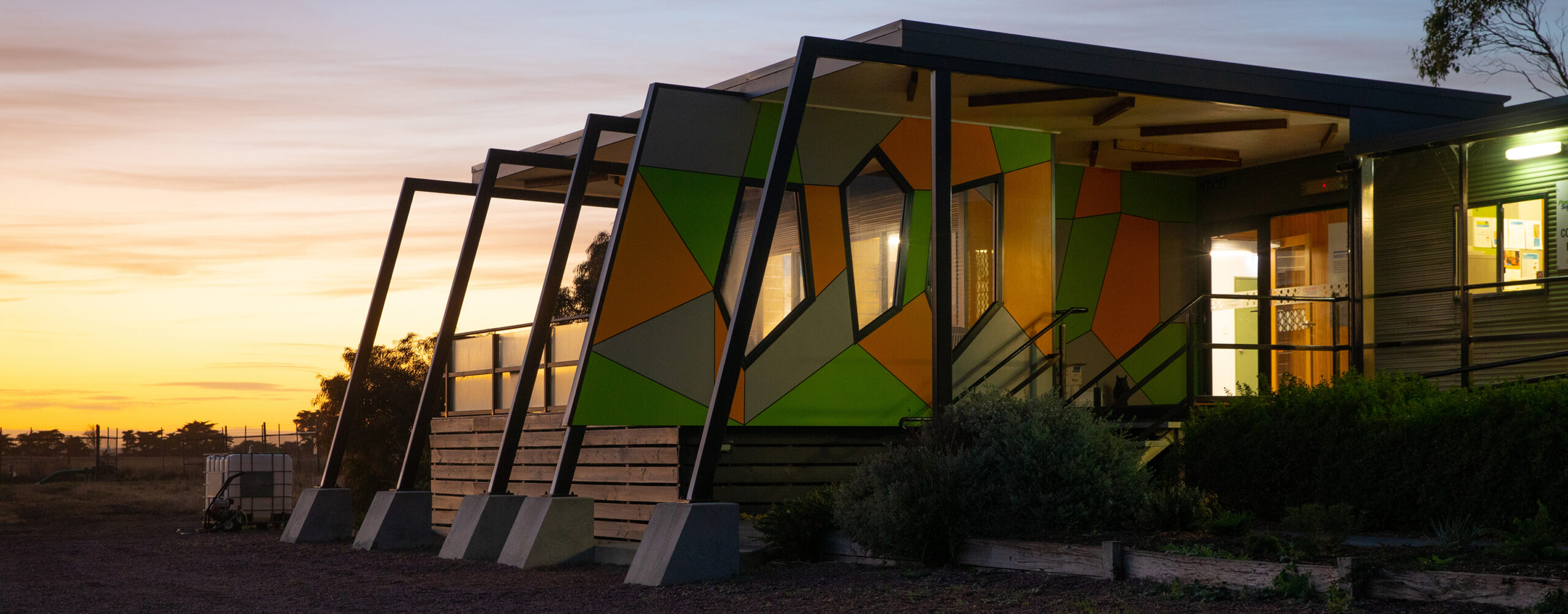CO2CRC Future Program 2026-35
Partner with CO2CRC on field-proven CO₂ storage researchJoin a national, industry-aligned R&D program anchored by the Otway International Test Centre (OITC) to deliver assured storage performance, regulator-ready monitoring, and basin-scale planning.
Note: CO2CRC welcomes overseas collaboration – please email futureprogram@co2crc.com.au to discuss participation, data and IP settings, and OITC trial logistics.
Why storage research, and why now?
Carbon Capture and Storage (CCS)—and, critically, geological CO₂ storage—is essential for durable, large-scale emissions reduction across LNG & natural gas processing, hard-to-abate sectors and for enabling negative-emissions pathways such as BECCS and DAC. Australia is uniquely positioned to lead: we have high-quality storage resources close to major sources, and a globally unique asset in the OITC, a comprehensively instrumented field laboratory with two decades of operations and benchmark datasets. Most importantly, we have world class research capacity in reservoir modelling and CO2 monitoring. CO2CRC’s Future R&D Program (2026–35) turns storage science into practice: delivering field-validated evidence, confidence in approvals, lower lifecycle monitoring costs, and hub-ready planning.
Our Future R&D Program
Validated, Effective Storage Operation and Utilisation

Who can participate
Australian universities, CRCs, Australia researcher organisations and research consortia with strengths in geoscience, geophysics (including marine), reservoir engineering, geomechanics, geochemistry, monitoring & verification (pressure/strain/gravity/fibre-optic), AI/ML, techno-economics, and education/training. Cross-disciplinary teams are encouraged. International research organisation are also encouraged to seek collaboration.
How to engage
1. Initial engagement
Reach out to CO2CRC to discuss your capabilities and interests
2. Scope
Identify your theme fit and prepare a 1 – 2 page concept (objectives, methods, datasets/field needs, milestones).
3. Support
Send a Letter of Support and Partner Contribution Form (cash and/or in-kind).
4. Shape
Co-design your R&D with CO2CRC theme leads and other research partners.
5. Deliver
Execute and report quarterly; publications proceed after a short review to protect confidentiality and any patent filing
OITC access for trials
Turn bench-scale ideas, prototypes and models into field-validated solutions at a comprehensively instrumented, operational site. The OITC is an open, collaborative platform for multi-institution teams and technology developers. CO2CRC will co-design your trial (objectives, instrumentation, data plan, HSE) and schedule OITC access windows to acquire high-quality datasets under realistic storage conditions.
Leverage two decades of OITC datasets to benchmark new modelling approaches, injection methods and monitoring techniques against known subsurface behaviour. We welcome applied technology validation and field studies aligned to the eight research themes (and complementary ideas beyond them). Projects are typically funded via industry co-investment and competitive grants.

FAQs
How do we align a proposal to the eight themes?
Pick the primary theme by your core question (e.g., conformance = Theme 1; geomechanics = Theme 2; M&V = Theme 3) and name any secondary themes your work enables (e.g., AI from Theme 6 supporting Theme 3). Keep the problem statement crisp, the anticipated dataset/model output explicit, and the path to field relevance clear.
What makes a strong 1–2 page concept?
A clear objective, hypothesis, methods, expected outputs (models, algorithms, datasets, protocols), dependencies (data, sensors, samples), milestones, and the decision/use case your results will inform (e.g., closure criteria, monitoring design, hub planning, integrity standard).
What kinds of research questions fit Theme 1 (Assured Storage Performance)?
Conformance metrics and uncertainty reduction; post-closure behaviour; THMC model calibration; digital twin update logic; evidence thresholds for regulator confidence and closure decisions.
What belongs in Theme 2 (Geomechanical Modelling & Validation)?
Fault/fracture response and thresholds; pressure-rate envelopes; microseismic discriminants; coupling lab/field/forward models; operational decision rules tied to geomechanical indicators.
What’s in scope for Theme 3 (Effective M&V)?
Risk-proportionate designs; sensitivity/uncertainty budgets; multi-sensor integration (pressure/strain/gravity/fibre-optic/sonic); cost/performance comparisons; low-impact offshore options; QA/QC and verification workflows that regulators can adopt.
What does Theme 4 (Basin-Scale Modelling) seek?
Capacity and pressure-interaction mapping; cumulative-impact assessment for multi-project basins; screening frameworks; shared-infrastructure scenarios; pragmatic data standards for basin planning.
What are priorities for Theme 5 (Infrastructure Re-use & Well Integrity)?
Standards/playbooks for re-use decisions; long-term materials performance (casing/cement/seals) under CO₂ exposure; surveillance protocols; fitness-for-service and closure criteria that regulators can reference.
How does Theme 6 (AI-Enabled Storage Solutions) integrate with other themes?
AI is an enabler: anomaly detection in M&V (Theme 3), model-to-data conformance (Theme 1), geomechanical risk scoring (Theme 2), and decision support dashboards. Emphasis on transparent models, uncertainty quantification, and real-time utility.
What analyses fit Theme 7 (Techno-Economics & Realising Benefits)?
Cost/benefit for monitoring options; value of injectivity gains and pore-space utilisation; re-use economics; rollout cost curves; abatement metrics; investment-grade summaries linking technical choices to $/t outcomes and policy signals.
What does Theme 8 (Education, Training & Communication) look for?
Curricula, short courses, and centre-of-excellence modules spanning geoscience, geophysics, reservoir engineering, geomechanics, and M&V—plus training pipelines for HDRs/ECRs and practitioner-ready materials for regulators and industry.
Do projects need field access to be eligible?
No. Lab studies, numerical methods, and AI/analytics are the basis for this future research program, yet it is encouraged that it demonstrates a pathway to full scale application and that may be via field validation. Note, if field support is needed, it can be planned with the relevant theme, but will require additional funding.
What TRL range are you targeting?
Typically TRL 3–6 across the research themes, with pathways to TRL 5–7 where field validation is appropriate.
How are proposals reviewed?
Criteria include: relevance to theme goals; clarity of problem/use-case; credibility of methods; contribution to national capability; pathway to deployment/standardisation; and opportunities for cross-theme leverage (e.g., AI + M&V).
Can international research groups participate in themes?
Yes. International collaboration is encouraged where it strengthens scientific quality and comparability. Overseas teams should contact us to discuss participation settings.
Begin the conversation today
Contact us to schedule a confidential, no-obligation discussion on how your organisation can participate in our high-impact, high-value future program and help build a CCS-Ready Australia.
Email: futureprogram@co2crc.com.au
Phone: +61 3 8595 9600
